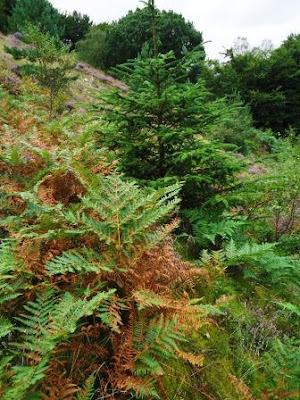This morning we headed up to the cattle grid onto the commons. Anyone stood here on Sunday would have seen a Sky Ranger parked up on the grass where sheep now graze and shortly after would have witnessed it taking off from right to left of this sunny scene.
What wasn't here on Sunday was a field full of grazing beef cattle who were curious about this quiet person with a camera and as you can see the sheep were intrigued by the dog who sat quietly watching them as they approached closer and closer towards us.
This young bullock approached closer slowly, sniffing the air as if to ascertain quite what we were but decided to keep his distance and just watched as we stood in the warm sun making the most of the warmth.
I love the view from here. Looking down across to the farm were Ffin was born. The lovely old beech trees in the fields that have just recently been harvested for hay, but have quickly returned to the verdant green of lush new growth. It's hard to believe that part of that ground was once the site of an open cast coal mine, the remains of which can still be seen.
As we stood there with our backs to the fence watching the sheep come closer, I became aware of a snuffling sound behind me and as I turned, I came face to face with this >>> A very curious bullock with a wonderful face and such lovely colouring and that sweet breath that these grazing beasts have. The dog stayed perfectly still and just looked rather bemused by all this attention from both sides of the fence and didn't even flinch when he got a snort of bovine breath full in his face but the bullock seemed more curious about me, this strange human with a camera.
<<< this cow was resting her head against this sturdy fence post. What a wonderfully glossy dark coat! She almost looks as though she's been polished. All around us was just a warm, calm, relaxing scene, it will all change tomorrow with the heavy rain front that is heading our way, meanwhile today's skies were a welcome sight with their ever changing clouds chasing each other above the ground.




















































